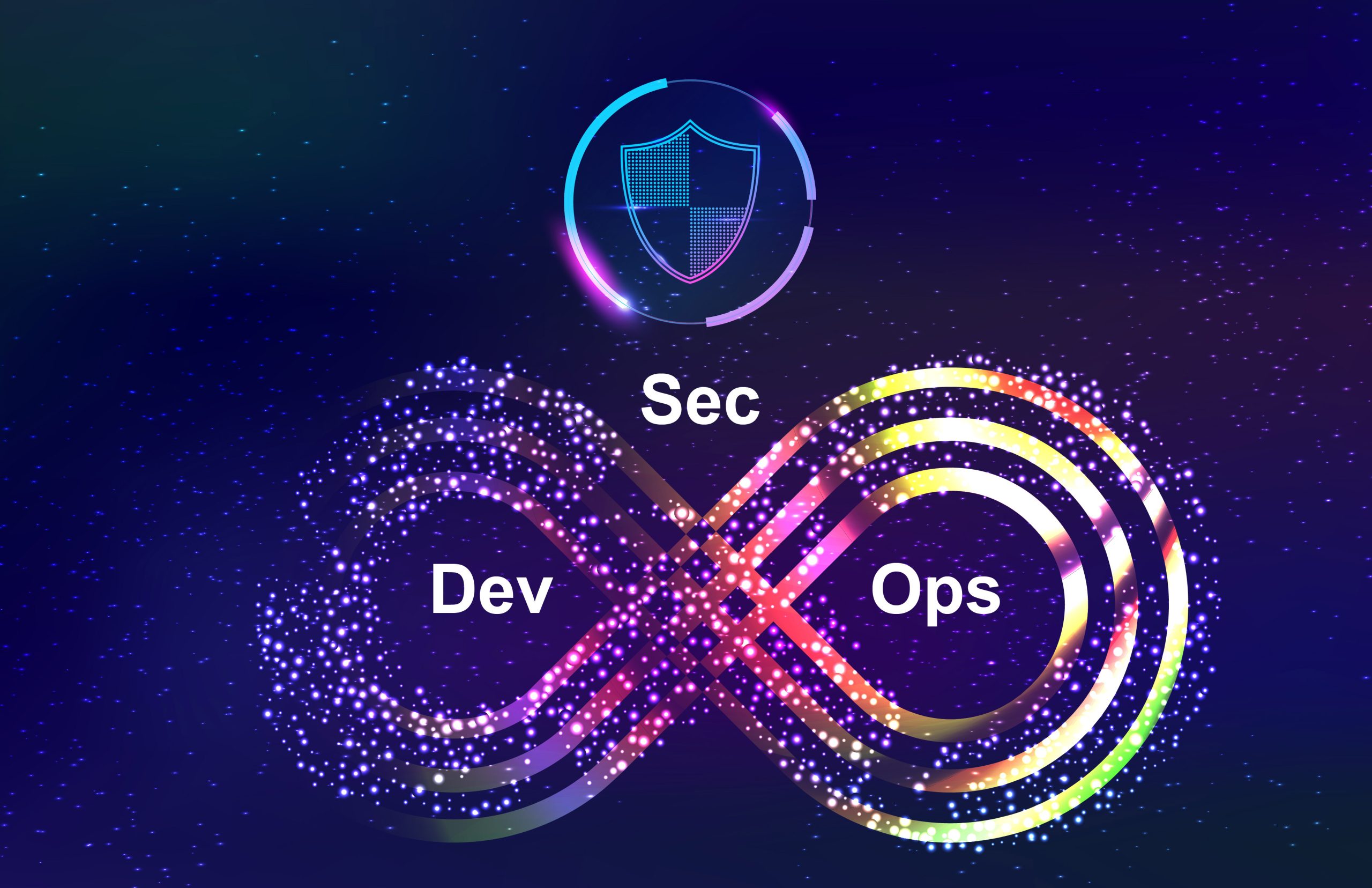 By: John Abhilash / March 11, 2024
By: John Abhilash / March 11, 2024
DevSecOps: Unleashing Creativity and Innovation Within a Secure Software Symphony
In the fast-paced world of software development, innovation is the lifeblood. New features, functionalities, and technologies emerge at lightning speed, driven by the constant demand for a dynamic digital experience. However, this relentless pursuit of progress can sometimes clash with the vital need for security. Traditional security practices, often siloed and reactive, can act as a roadblock, hindering development speed and stifling creativity.
This is where DevSecOps enters the stage, not as a single instrument, but as a full orchestra, harmonizing security with innovation throughout the entire software development lifecycle (SDLC). But it goes beyond just achieving a secure product; it fosters a culture that DevSecOps encourages creativity and experimentation. Let’s delve into the world of DevSecOps, exploring how it empowers developers to push boundaries while maintaining robust security.

Traditionally, development, security, and operations functioned as separate entities, each with their own priorities and goals. DevSecOps disrupts this siloed approach, promoting a collaborative environment where these teams work together as a cohesive unit. Developers, security professionals, and operations personnel become a well-oiled machine, integrating security best practices from the initial planning stages to deployment and ongoing maintenance.
The traditional security approach often positioned it as a gatekeeper at the end of the development pipeline. Security checks happened late in the process, leading to delays and frustration for developers who had to scramble to fix vulnerabilities identified at the eleventh hour. DevSecOps flips this script with a concept called “Shift Left.” Security considerations are woven into the very fabric of the SDLC, ensuring earlier identification and remediation of security issues. Imagine the orchestra tuning their instruments together before the performance begins, establishing a foundation for a harmonious melody.

Repetitive security tasks, once a monotonous solo for security professionals, are automated using a suite of tools like static code analysis, vulnerability scanning, and security testing frameworks. This DevSecOps automation symphony frees up security professionals to focus on strategic initiatives and complex security challenges. Developers, meanwhile, can focus on what they do best: writing innovative code and experimenting with new technologies. It’s like the orchestra conductor utilizing technology to streamline repetitive tasks, allowing musicians to focus on their creative expression.
DevSecOps fosters a culture of shared ownership for security. Developers become active participants in the security orchestra, writing secure code from the outset. Security professionals provide guidance and tools, ensuring developers have the right instruments for the job. Operations personnel, responsible for the stage (infrastructure and deployment), ensure a secure environment for the final performance. This shared responsibility model fosters a sense of accountability and empowers developers to take ownership of their code’s security.
DevSecOps doesn’t just enhance security; it creates an environment that encourages creativity and experimentation. Here’s how it fuels innovation:
1)Reduced Fear of Failure: A collaborative environment fosters psychological safety. Developers are encouraged to experiment and take calculated risks, knowing that security considerations are embedded throughout the process. This psychological safety allows them to explore new technologies and development approaches, akin to a jazz musician trying out a new riff during a solo.
2)Faster Feedback Loops: Continuous integration and continuous delivery (CI/CD) pipelines are a cornerstone of DevSecOps. These pipelines automate the building, testing, and deployment of code, providing developers with rapid feedback on security issues. This allows them to identify and address problems early, before they become major roadblocks, similar to an orchestra conductor receiving immediate feedback from the audience during a live performance.
3)Security as an Enabler, Not a Barrier: By proactively addressing security concerns, DevSecOps removes them as a barrier to innovation. Developers are empowered to focus on building innovative features and functionalities, knowing that security is being taken care of. This allows them to truly shine, composing and performing their part without the constant worry of security vulnerabilities.
Experimentation with Guardrails: Improvising Within the Score
While DevSecOps encourages experimentation, it doesn’t mean throwing caution to the wind. Imagine a jazz musician improvising within the boundaries of the chord structure. Here’s how DevSecOps balances innovation with security:
Teams engage in threat modeling exercises, which are akin to brainstorming sessions where musicians analyze potential challenges and strategize how to overcome them. By identifying potential security risks associated with new features or technologies, teams can develop mitigation strategies before problems arise, ensuring a smooth and secure performance, even when facing unforeseen circumstances.
Several companies have successfully adopted DevSecOps to streamline development, enhance security, and unleash developer creativity. Here are a few real-world encores that showcase the power of a well-rehearsed DevSecOps orchestra:

The Road to a Secure and Innovative Future: Building the DevSecOps Orchestra
DevSecOps is not just a methodology; it’s a cultural shift that requires buy-in from all stakeholders. Implementing DevSecOps effectively involves:
1)Breaking down silos: Fostering communication and collaboration between development, security, and operations teams. This is akin to ensuring all sections of the orchestra can hear each other clearly and work together seamlessly.
2)Investing in automation tools: Implementing tools for static code analysis, vulnerability scanning, and security testing to streamline security processes and free up human resources for more strategic tasks. Imagine investing in high-quality instruments for your orchestra, allowing the musicians to focus on their craft while automation takes care of the repetitive tasks.
3)Upskilling the workforce: Providing training and development opportunities for all team members to foster a shared understanding of security best practices and DevSecOps principles. This is similar to providing ongoing training for musicians to ensure they stay up-to-date with the latest techniques and technologies, while also encouraging individual creativity and improvisation.
4)Building a culture of security: Encouraging open communication and a “security-first” mindset where everyone is responsible for security. Imagine fostering a culture within the orchestra where everyone takes pride in delivering a flawless and secure performance, while also celebrating individual contributions and artistic expression.
The Symphony of Benefits: A Harmonious Performance
By embracing DevSecOps, organizations can reap a multitude of benefits, akin to a well-rehearsed orchestra delivering a captivating performance:
1)Enhanced Security: Proactive security measures throughout the SDLC lead to a more secure software development process and a reduced risk of vulnerabilities. This translates to a more secure and reliable performance for the audience.
2)Increased Agility: DevSecOps enables faster feedback loops and smoother deployments, allowing organizations to deliver new features and functionalities to market more quickly. Imagine the orchestra being able to adapt and perform new pieces with greater agility, incorporating audience feedback and requests.
3)Improved Quality: The focus on security from the outset leads to higher-quality software with fewer bugs and vulnerabilities. This ensures a more polished and error-free performance.
4)Reduced Costs: Early identification and remediation of security issues can prevent costly rework and data breaches. This translates to less wasted resources and improved financial performance.
5)Boosted Morale: A collaborative environment with shared ownership of security fosters better communication and a more positive work environment. This leads to a more engaged and motivated team, similar to an orchestra where all members feel valued and contribute to the overall success of the performance.
DevSecOps represents a paradigm shift in software development. It’s a collaborative approach that fosters a healthy balance between security and innovation, akin to a well-rehearsed orchestra delivering a captivating performance. By embracing DevSecOps principles, organizations can build secure, reliable, and innovative software that meets the demands of an ever-evolving digital world. As DevSecOps continues to evolve with new technologies and methodologies, it promises to play a critical role in shaping the future of secure and innovative software development, ensuring a harmonious performance for years to come.
Guardian: Revolutionizing Application Security
Key Features of Guardian:
1.Shift Left Security : Early Vulnerability Detection
2.Fast Track your VAPT: Gain insights to your application security posture across various assessments (SCA, SAST, DAST, IAC)
3.Security Driven Development : Streamlined Vulnerability Assessment and Penetration Testing(VAPT)
4.Integration with JIRA: Provided a centralized hub for tracking ,prioritizing and managing security issues.
5.AI powered Remediations: Immediate Resolution Guidance
Guardian’s AI delivers immediate resolution guidance upon identifying vulnerabilities, accelerating the remediation process and fostering a culture of proactive security to enhance overall code quality.
In an era where cybersecurity is paramount, Guardian serves as an indispensable ally, safeguarding applications throughout their lifecycle and empowering businesses to navigate the digital landscape with confidence.
Check Out our Other Resources: CASB vs SASE / OpenTofu Vs Terraform

Leave a Comment